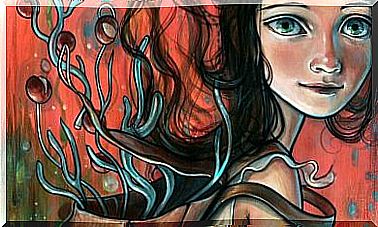INFP Personality (the Mediator) According To Carl Jung

The INFP personality defines people as introverted, intuitive, sentimental, and perceptive.
According to Carl Jung, they would be profiles endowed with great sensitivity, creativity and independence and that also present a high idealism. They are close, compassionate people who are defined as healers because they care about their own personal growth and at the same time favor that of others.
When we read Carl Jung’s Psychological Types and his theories on personality, we appreciate a great advance in his time. At a time when psychology was still in its adolescence, the famous Swiss psychiatrist wanted to present the foundations of a personality model based on a singular and, at the same time, revolutionary approach.
He introduced the concepts of introversion and extraversion . However, he established these dimensions as the result of something continuous, to which other subjective and perceptual phenomena can be mixed at the same time.
Based on this, we understand that no one is properly “introvert” or “extrovert”, but that we are all within a spectrum in which we are defined by more dynamics, entities and traits.
Thus, his theory of personality, defined in eight typologies, would be the first step towards, decades later, the well-known Myers-Briggs classification (1944), in which up to 16 subtypes were defined.
Thus, although these models are not as popular as others that are based on better-known instruments, such as the 16 PF by Raymond Cattell, it is worth pointing out that, in the field of personal growth, they continue to enjoy high interest.
Studies such as those carried out by David J. Pittenger, from Marshall University in Virginia, for example, indicate that it is a very suitable tool to promote self-reflection. Therefore, knowing each of its typologies never hurts.

What characteristics define the INFP personality?
The INFP personality, according to the Myers-Briggs model, is the result of the interaction of four basic dimensions:
- How you use and channel your energy, attention, thoughts and interaction ⇒ introverted;
- How you process your reality, how you draw conclusions and appreciate the small details ⇒ intuitive;
- The way the INFP personality makes its decisions ⇒ based on feelings;
- When it comes to organizing and responding to your surroundings, this is done through spontaneity or always relying on a basic dimension – perception.
This type of profile responds, therefore, to the acronym INFP (Introverted-intuitive-feeling-perceptive) . Thus, the creators of this measurement tool, Katharine Briggs and Isabel Meyer, defined it as the “mediator” profile.
They are idealistic people, highly involved in generating happiness, in favoring their own and others’ personal growth.
So let’s look at these characteristics that define them.
They are idealists, they see the good in the world
The idealists of mind and heart do not exist in excess. Therefore, the authors of this scale indicated that this sixth typology within the Myers-Briggs model defines only 4% of the population.
- They are people who live by their ideals, who trust in the natural goodness of the world;
- However, this idealism is not passive. This profile is also characterized by a firm but silent commitment. In other words, they are still introverted people. Not many, therefore, know the depth of their ideals and personal commitments;
- They won’t think twice about plotting their personal path based on these principles, even though many may end up not understanding them or truly knowing them.
ethical and compassionate
Your sense of ethics is very high. They know very clearly what’s right and what’s wrong, and they won’t think twice about always being true to their beliefs.
However, they are not people who “exaggerate”. They exercise respect, compassion and care for others through simple but always profound acts. They generate good through calm and absolute discretion.

Independent
We could say that the INFP personality usually draws a life plan from the heart.
They are sensitive people, but self-assured. They are introverted and reserved men and women, but never indecisive when it comes to making decisions. They do this through their intuition, they trust their inner voice, and furthermore they do this because they are idealistic, because they believe that the world, at its purest essence, is noble and good.
Artistic, sensitive, careless
The INFP personality is usually oriented towards art, writing, photography, as well as any artistic expression in which the person can represent their emotions, ideas and a confident and optimistic inner world.
They are also very sensitive profiles with everything that surrounds them. They appreciate the details, the sensations, they know how to connect with people in a very simple and, at the same time, magical way. They are not great speakers, but they are very good at listening, supporting and being there when people need them.
On the other hand, it must be said that they like to act instinctively. They don’t need to plan things ahead, keep schedules, schedule tasks, keep their belongings and objects in order. Therefore, these people often have homes with very messy closets. That’s because they prioritize other things.

To conclude, as we have seen, the INFP personality is defined, above all, by its confident idealism, its kindness and artistic interests. For this reason, one of the phenomena that these people most often suffer from is disillusionment. To nurture expectations about the world and those who inhabit it causes them to suffer severe disappointments.
Carl Jung’s model of psychological types, and especially the Myers-Briggs indicator, are resources that are within our reach and, to say the least, are very curious.







